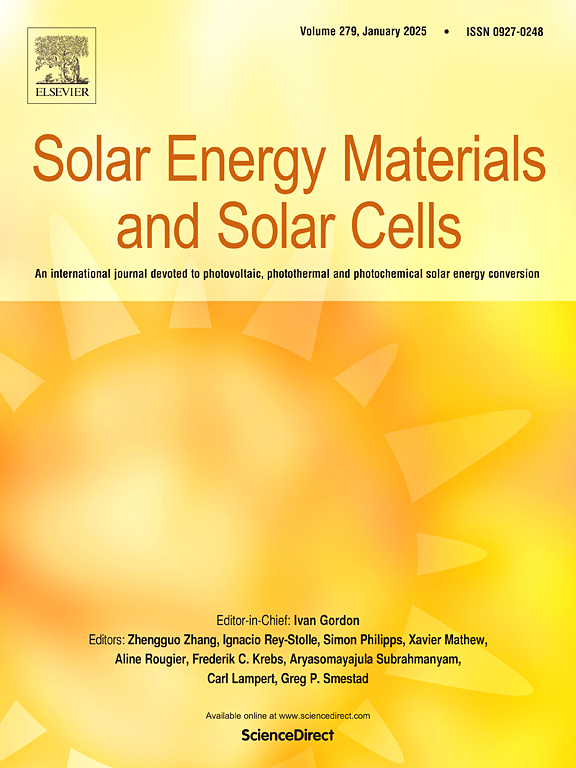Large-scale SiO2 particle integrated superhydrophobic thermal insulating hollow nanofiber film for daytime passive radiative cooling
IF 6.3
2区 材料科学
Q2 ENERGY & FUELS
引用次数: 0
Abstract
Passive daytime radiative cooling (PDRC) is a sustainable technology for cooling objects without consuming additional energy by reflecting sunlight and radiating heat to cold outer space. However, many PDRC devices proposed in recent years are complex and costly with the cooling performance degraded due to the surface contamination and heat conduction with the outdoor air, limiting their practical applications. Here, a cooling film consisting of poly (vinylidene fluoride-co-hexafluoropropylene) P(VDF-HFP) hollow nanofibers with surface adhered by SiO2 particles is fabricated by a combination of high temperature electrospinning and spraying technology, which can achieve triple functions of PDRC, self-cleaning and thermal insulation. The P(VDF-HFP)/SiO2 thermal insulating hollow nanofiber cooler (TIH-P(VDF-HFP)/SiO2) has an average mid-infrared emissivity of 98.2 % (8–13 μm) and reflects 98.9 % of solar irradiance due to the vibration bonds of C−H and C−F molecular chains in P(VDF-HFP) nanofibers and the particle-nanofiber structure scattering. Besides, the TIH-P(VDF-HFP)/SiO2 cooler exhibits the thermal conductivity of 0.019 W m−1 K−1 (lower than air) and a high static water contact angle (145°), which can reduce the environmental heat gain and possess self-cleaning performance, ensuring the stability and durability of the cooler. In practical applications, our cooler maintains an average temperature drop of 14 °C for the wood house model under direct sunlight even after the mud water contamination. This work provides a feasible way for fabricating thermal insulating PRDC materials and has the potential for a wide range of energy-saving and emission reduction applications.
求助全文
约1分钟内获得全文
求助全文
来源期刊

Solar Energy Materials and Solar Cells
工程技术-材料科学:综合
CiteScore
12.60
自引率
11.60%
发文量
513
审稿时长
47 days
期刊介绍:
Solar Energy Materials & Solar Cells is intended as a vehicle for the dissemination of research results on materials science and technology related to photovoltaic, photothermal and photoelectrochemical solar energy conversion. Materials science is taken in the broadest possible sense and encompasses physics, chemistry, optics, materials fabrication and analysis for all types of materials.
 求助内容:
求助内容: 应助结果提醒方式:
应助结果提醒方式:


